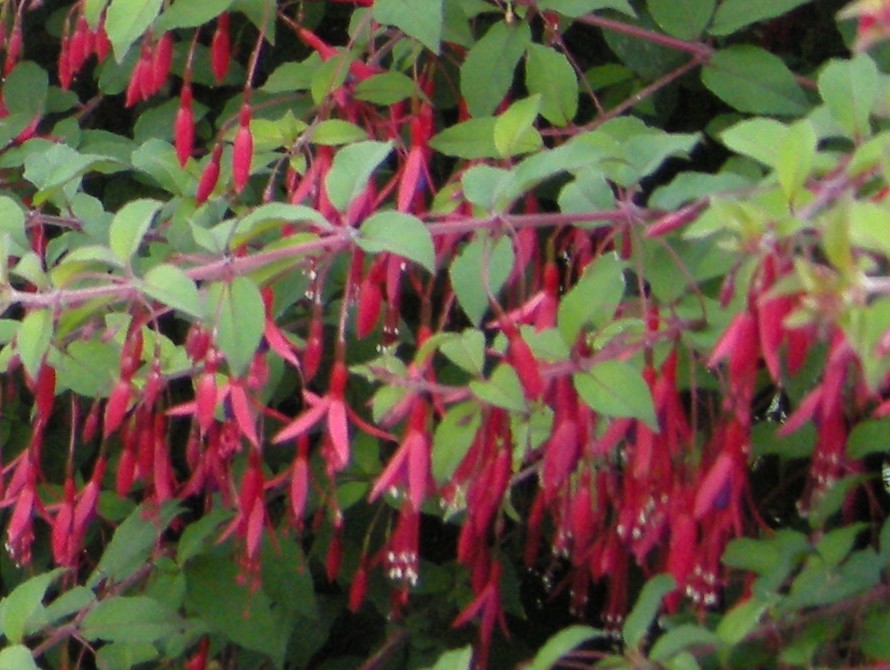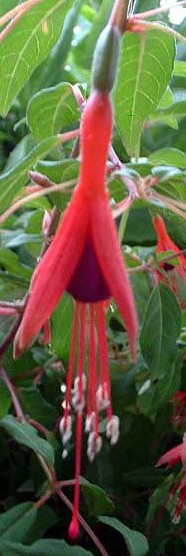 This deciduous shrub is native to temperate areas of southern Chile and Argentina where it grows in forest clearings and margins. It forms a bushy clump with dark green foliage and pendant tubular flowers that are red and purple, pink and lavender, or white. The flowers are attractive to hummingbirds, hence the alternate common name, hummingbird fuchsia. Plants are long blooming and give a tropical look to the garden. They are attractive in beds and borders, useful as hedges, and do well in containers.
This deciduous shrub is native to temperate areas of southern Chile and Argentina where it grows in forest clearings and margins. It forms a bushy clump with dark green foliage and pendant tubular flowers that are red and purple, pink and lavender, or white. The flowers are attractive to hummingbirds, hence the alternate common name, hummingbird fuchsia. Plants are long blooming and give a tropical look to the garden. They are attractive in beds and borders, useful as hedges, and do well in containers.
 Type: Deciduous shrub
Type: Deciduous shrub
Outstanding Feature: Flowers
Form: Upright, irregular to rounded
Growth Rate: Moderate
Bloom: Pendent, tubular flowers in purple and red, pink and lavender, or white; early summer into fall
Size: 6-10’ H x 6-10’ W
Light: Full sun to part shade
Soil: Fertile, medium moist, well-drained
Hardiness: Zones 6-9
Care: Mulch in zone 6; prune in spring to encourage bushiness
Pests and Diseases: Gall mites, spider mites, scale, thrips, whiteflies, aphids, root-knot nematodes, rust, Verticillium wilt, crown gall, mold, blight, rots
Propagation: Softwood cuttings spring, semi-ripe cuttings in summer; seed.
